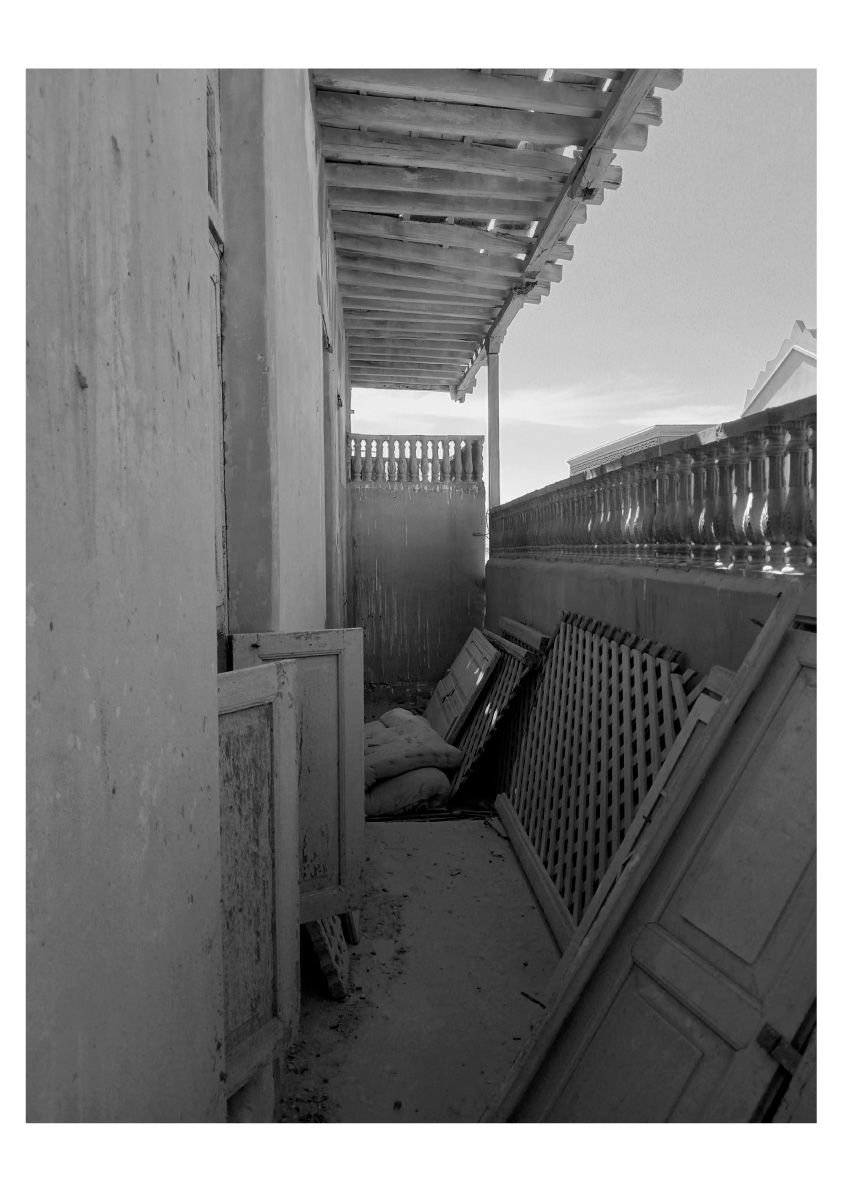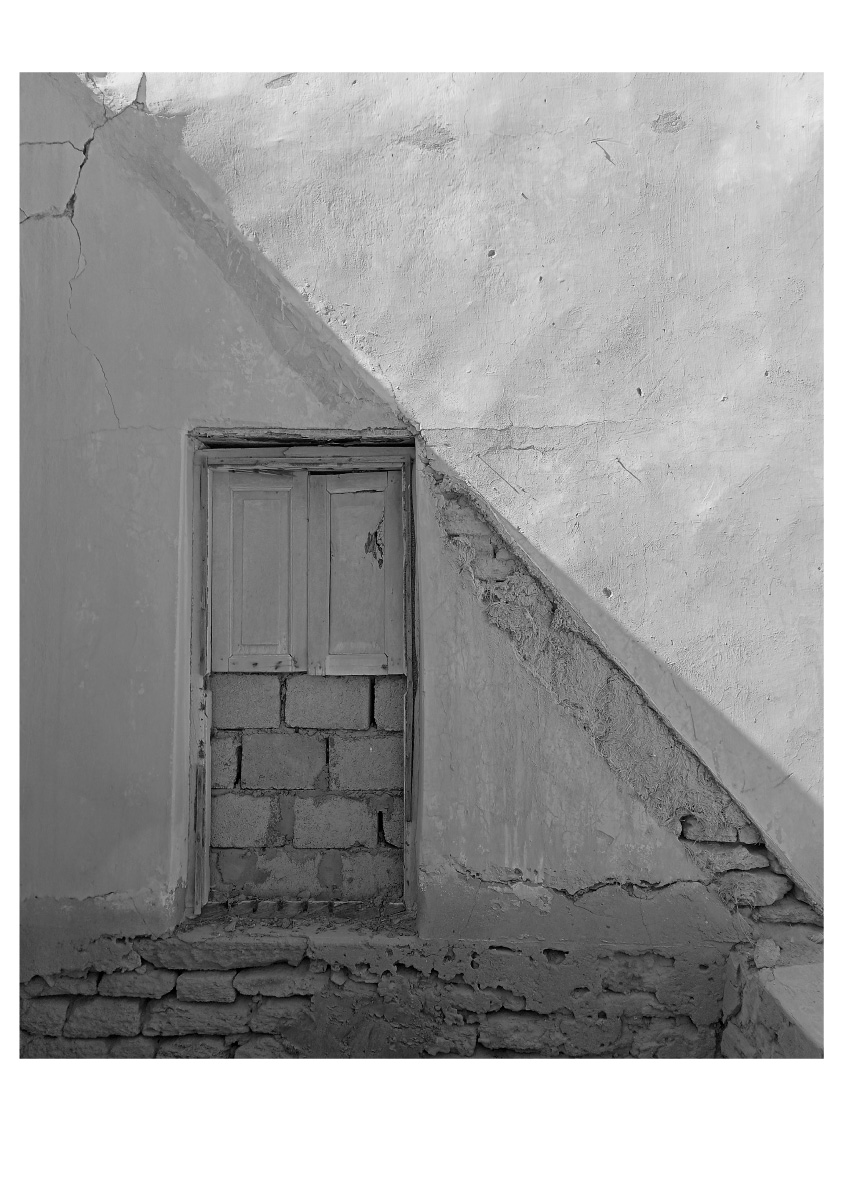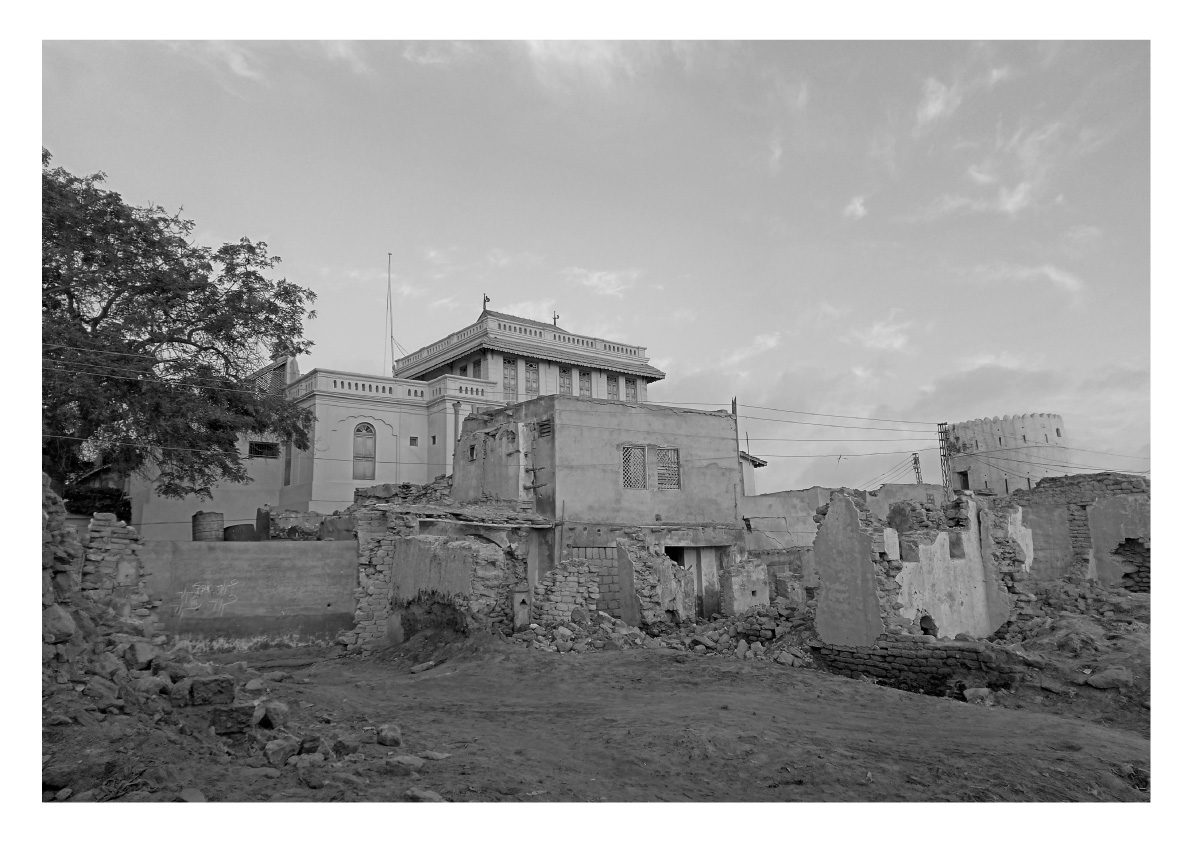Inside a Community- Narrating the untold stories of a community
By Rahim Bakhsh Abid
PAKISTAN PHOTO FESTIVAL FELLOWSHIP 2021 PROJECT
The school was middle till 1974 and later Zulfiqar Ali Bhuto nationalized all the schools countywide. coming under the guardianship of the said government, the school did not flourish well as it was relocated outside the community
Master Mansoor Ali Sayani said that initially there were four families in Ismaili Community Gwadar. Bana’s forefather and Gola used to live in Chabhar, Iran and came to Gwadar for trade. My grandfather came from Saakra (Sakura) which is an area in interior Sindh. They have migrated from there and settled in Gwadar. It was about 1757 or 1760 when they came to Gwadar according to my father.
The school was present in the community and my grandfather used to go to school from 1899 my father said. it was not officially and formally registered school but Ismaili had the interest to know the basic skills of correspondence and for trade purposes. my father said that he studied just two classes which were enough to provide the basic teachings of reading and writing to continue his commercial activities. My mother passed middle class from the very class in 1936 in Agha Khan School which was previously known (His Highness Agha Khan School).
The main reason of Ismailis’ migration from Gwadar to Karachi took place because of the educational reasons as there was no proper system of high education; no proper system of colleges and universities. However, they had completed their middle education from Gwadar City. Agha Khan School system was good enough till 1970 and teachers came from outside including Karachi and Punjab. The children of high authorities and bureaucrats were enrolled in the same school. The population of Ismaili was about 600-800 in 1970. There are many families in the community whose children or wives are in Karachi but their husbands, fathers stay here in Gwadar for commercial and trade reasons. The school was middle till 1974 and later Zulfiqar Ali Bhuto nationalized all the schools countywide. coming under the guardianship of the said government, the school did not flourish well as it was relocated outside the community and the newly allocated land was a teachers hostel previously. The remaining Ismaili teachers along with two other teachers were then accommodated in the community building. The government converted the middle to primary school and the uniforms were changed to Shalwar and Kameez. When Zia-Ul-Haq government time came, he then gave back all Agha Khanis’s schools to them again in 1986. I came in Gwadar in 1987 from Karachi. The school was primary and Urdu medium was implemented. It is the occurrence of 1966 when my age was 10 years old and was reading in 4th standard my father took me in Karachi. We came to Gwadar just for vacation occasions and visited at that time but I studied in Agha Khan School, Karachi. I worked in Mari Gold School, Karachi till 1982 as a vice principle. Before serving in this school, i worked in a government school. When i was appointed as a teacher in Agha Khan School in 1976, i was just 20 years old. My salary was 180 rupees and my father laughed at me that you brought just 180 rupees at home while you took around 300 rupees from home. When I was 12 years old, I used to be a scouting boy and passed from Quid-Azam Islamabad center. It was my wish to be a leader and lead other students. (In 1983, my father told me to serve in Gwadar City. My mother (who was a teacher) also served in the same school in 1936. When my mother got married in 1946, she then left teaching in the school. It seemed to be as if it is my own city and own school. Many Ismaili resided in Gwadar City while the rest of their community people lived in Muscat, Oman in 1958. It was the permission of His Highness Agha Khan to permanently settle in Gwadar City not to move in Muscat, Oman. [We had British Passport at that time]. In 1987, an announcement was made after offering prayers in Water Pump Jamat Khana of Karachi that a teacher is required for Agha Khan School Gwadar. My first wife passed away at home. I had some hard times in Karachi city and the bearing the grief of my deceased wife, then my sister suggested me to move to Gwadar city to settle yourself and get better emotionally I will take care of the rest of matters myself. Second day, I met Fida Ali at Jamat Khana who was the chairman of Agha Khan School Gwadar at that time. Agha Khan School Chairmen and members both worked voluntarily and were not paid salary all over the country. If the chairman did not sign on the check, so the salary was not issued. Sultan Muhammad Shah’s 100th birthday was festively commemorated. There was a cinema behind the Sorag Dil Football Ground and children were marching chanting the words (“Chap Raast Haayein”) there is left and right. As a teacher, the local people of Gwadar respected and honored me a lot. Ateeq-Ur-Rehman Nawab who was a social activist in Gwadar, he offered the suggestion to Master Ali Mansoor to make his sculpture in his honor and fix it near the (Wali Gate Entrance in Ismaili Community)as at that time Syad Zahoor Shah Hashumi statue was being constructed but Ateeq-Ur-Rehman died in this duration and i got emotional in his demise and I attended his funeral in Gwadar.
My father once said that they were genuine Sindhies came from Hindustan in the same age that we migrated from Chabahar to Gwadar, in that times they were doing business with us in the local market, Mohan was one the last persons of that family who lived there after the partition of Hindustan. Here used to be Sultan Mosque.
Let me tell you How Hashu Kodu turned into Hashim Kodu!
My father said that Hashoo Kodu was the owner of that shop who did not have any children. Hashim was working in Hashoo Kodu shop as a worker of his shop Hashu Kodu was married living with his wife and they did not have any children Hashim was like a child to them. And my father said that he died here. (When his dead body was taken to the place for cremation which is port at present time, so his right hand did not burn. Then the people were surprised that why his right hand did not burn then it was revealed that his right hand did not burn because he was a generous man and provided rations and provisions to the needy people irrespective of their religion.
My father said Hashoo Kodu promised to Hashim you are a Muslim and I am a Hindu. Hashim if I died earlier before my wife, so you would look after my business I will entitle the ownership of the shop to your name and you have to pay wages to my wife. ( my father said he paid wages to his wife) Because Hashoo Kodu did not have any children to look after his business these were the Hashoo Kodu words to (Hashim) my father said he died before his wife so his wife was alone not living lonely she wrote a letter to her family relatives in India later they came and took her back to India these shops of nearby were handed over to Hashum Kodu. Only thing he sold was his house to Mukhi Nizam’s Uncle and Mukhi Nizam’s unlce went to America donated his house to Ismaili Jamat Khana Gwadar. How about is wife Is she still alive? quickly responded it was the year of 1958 I was not much younger might be maybe nine or ten year old boy.
In the shahi bazar half of the shop were of Hindus and half were Ismailis when Gwadar became a part of Pakistan in 1958 so most of them were business partners in the local market that’s why they sold there shops to Ismaili after that they migrated to Gulf, India. Only few of them stayed here Mohan was one of them his house inside Ismaili Community.
Thieves were also part of stairing over Ismaili Jamat Khana’ Aga Khan School and the Ismaili Generator room all meaningful useful things were there highlighted things which were to to be stolen. Doors, Windows’ Motors’ Generator’ before the camer’s they have ruined our homes and thier outfits.
(چور چرسی چوری چاردیواری چادر)
My father said that in our times there were no robbery and theft and this kind of situations if somone robbed a person and if someone robed something so directly indicated that this person is a thief he must be the culprit because there were the times when there were few peoples living out there and known to eachother very well. Now they are large in numbers I myself do not recognize them by their faces. The thieves were also in pursuit to steal the sacred place Ismaili Community Jamat Khan’s door chains and windows chains what ever where their eyes see a useful thing to them and make money for them that would be their priority to rob and steal it that’s why they walk in towards our sacred place and it’s old and ancient thing to steal them and the generator room adjcent to this place it was first generator of Makuran and also of Gwadar which came into Gwadar 1967 for Ismaili Community Jamat Khana Gwadar the Generator were functional during the day and night to supply eletrcity to the community it was very heavy and later on they sold it.
Now there are many options to supply electricity to a proper way but do you know something! mobile come but mobile cut off many things mother son relations’ the attitude of son with the father’ mobile have cut off the telephone’ mobile have cut off the hand watch’ mobile have cut off the friendship’ no one get rid of it to talk to ones brother’ sister’ father’ mother’ mobile have ruined most of the things in our daily life, mobile have cut off type recorder and an entire era of our in my notion.
In 1967 when I was travelling to Gwadar from Karachi I still remember we were five people in a small (mini) plain and the pilot was infront of us in this plain we ought to drink water by ourself (selfservice) the most interesting part was this we landed in Gwadar after one and half hour from Karachi but from Gwadar to airport to home it taken three hours to reach there because there were no proper road in that time only a single full of sand on its both ways and sometime people have had lost there ways due to full sand of the light road because it was full of turning and twisting up and down unwelling roots despite being the single road to the city.
Ismailia & Gwadar
There was a trade and cultural link between Persian and Mesopotamian civilization and the ancient civilizations of Sub continent. The land routes between these incent civilizations were passed through Makuran and Balochistan. Arabian Sea was the sea route. The indigenous small settlements on the northern coasts of Arabian Sea between Indus delta and the Strait of Hormuz had provided the port facilities to the voyages from East to West and wise versa.
Gwadar was a small village of fishermen and peasants around 10th or 11th century AD. It was captured and destroyed by Portuguese in 14th Century. It flourished in the era of English maritime advancements and East India Company. The rule of Bu – Saeed dynasty in Gwadar connected it with Oman and the East Africa.
In 13th and 14th century AD, Gwadar started to attract the traders from inland Makuran and Balochistn as well as from Iran, Iraq, and the cities of India. These trade links were made and developed by the Indian traders mostly Hindus. Ismailia came to Gwadar from Iran and India (Sindh and Gujrat).
The government of East India Company and the British in India and their control on the trade routes of Arabian Sea encouraged Hindu and Ismailia traders to establish their businesses in the coastal towns on Makuran. The trade slave was also a reason for the business men from India to do business in Gwadar. British did not allow slave trade from or in the Indian ports. The Hindu business men were the financers of slave trade in Makuran.
The Business and Trade Contribution;
The Hindus and the Ismailia in Gwadar controlled the local fishing economy and the trade. They used to buy the catch of the fishermen. They also had shops with food supplies. They used to provide loans to fishermen which fishermen were never able to pay back. Most of the fish drying yards (BAKKAR) were owned by the Ismailia in which the fish catch was dried and bundled to export to Culcutta, Mumbai, Kalikot, (Kerala) Ceylon (Sri lanka) and Japan. The workers in the drying yards were from local population. The Ismailia in Gwadar also traded several other commodities to Muscat, Somalia and Zanzibar. They also had their communities in these cities. Most of the trade and the administration of Sultanate of Oman were handled by the Hindus and Ismailia.
Social & Cultural Contribution;
Ismailia in Gwadar used to live together. There houses and huts were at a specific corner of the town. First they lived near a well close to the old grave yard. The area is now at the port road. Later they were given a better and higher place where they build their first Jamaat Khana in Gwadar which is called Imama. The Imama and their tents were surrounded by a fence. Since they were not great in number and the Imama site was very close to the grave yard, the Ismailia requested the Wali (Omani governor of Gwadar) to provide them a space near to the fort and market to build a jammat khana. Wali granted them permission and the new Jamaat khana of Gwadar was constructed near the fort and the market in 1895. Later Ismailia families started to reside near Jamaath Khana in a walled like community.
In the last decade of 19th century there were more than a hundred Ismailia families in Gwadar. They were also living in Ormara and Pasni in quite a good number. The leader of the Ismailia community was called Mukhi. Ismailia established first ever primary school in Gwadar in 1905. The school was for the children of their own community but the children of native influential were also enrolled. They also had a community health centre where a dispenser and a mid wife used to serve. A doctor (not qualified but experienced) Qamardin was also practiced in the community. Dr.Qamardin was very popular among native people. There were intermarriages between Ismailia and Baloch till the beginning of twentieth century. But later it was stopped. Even many Baloch families asked for divorce from their Ismaillia in-laws.
The Ismailia community had quite a good organization. They had their scouts, senior scouts, volunteers and a band. They band was also hired and used on the occasions of eids, marriages and the receptions of state or religious dignities. Ismailia community also introduced cricket and theatre in Gwadar.
Relations with native Balochs & Hindu community;
Ismailia strictly follow the instructions of their Mukhi who follows the guidelines and policies of HH Aagha Khan. The Ismaillia kept a close relation to the Wali and the British political agent. They were loyal to the ruler. They had trade and business relations with natives. But there was an air of mistrust too. The native elite did not like the influence of Ismaillia in the court of Wali. There was a conflict of interest between Hindu and Ismailia traders and communities too. The Hindus gradually lost their business and position in court to Ismaillia. Therefore they came closer to native elite (KAUDA) and tried to have more business and influence.
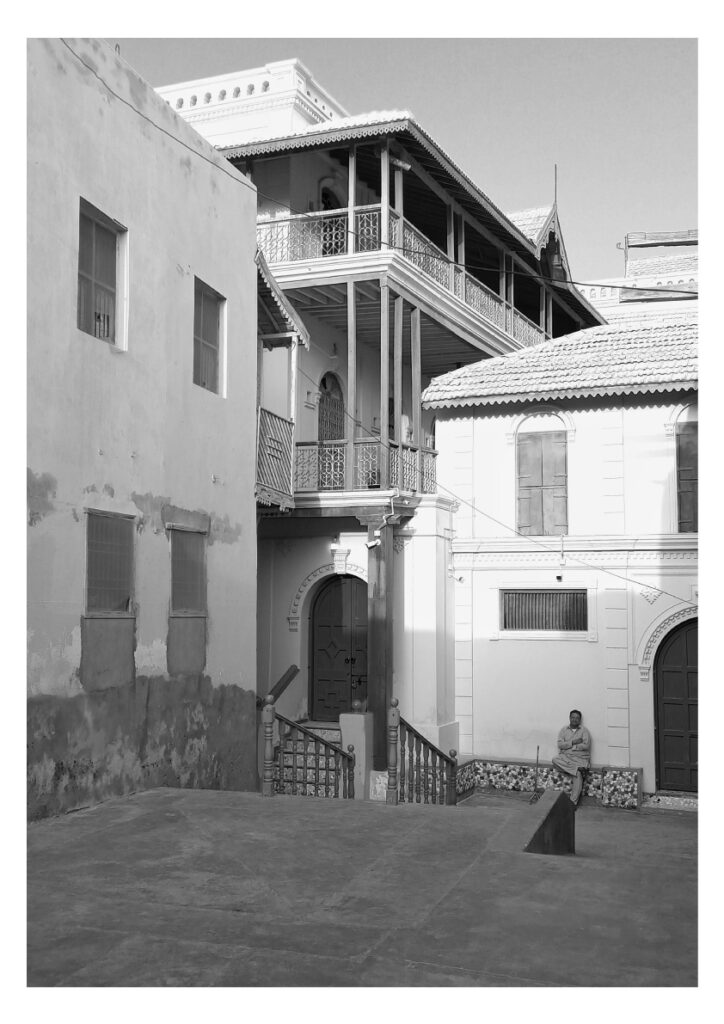
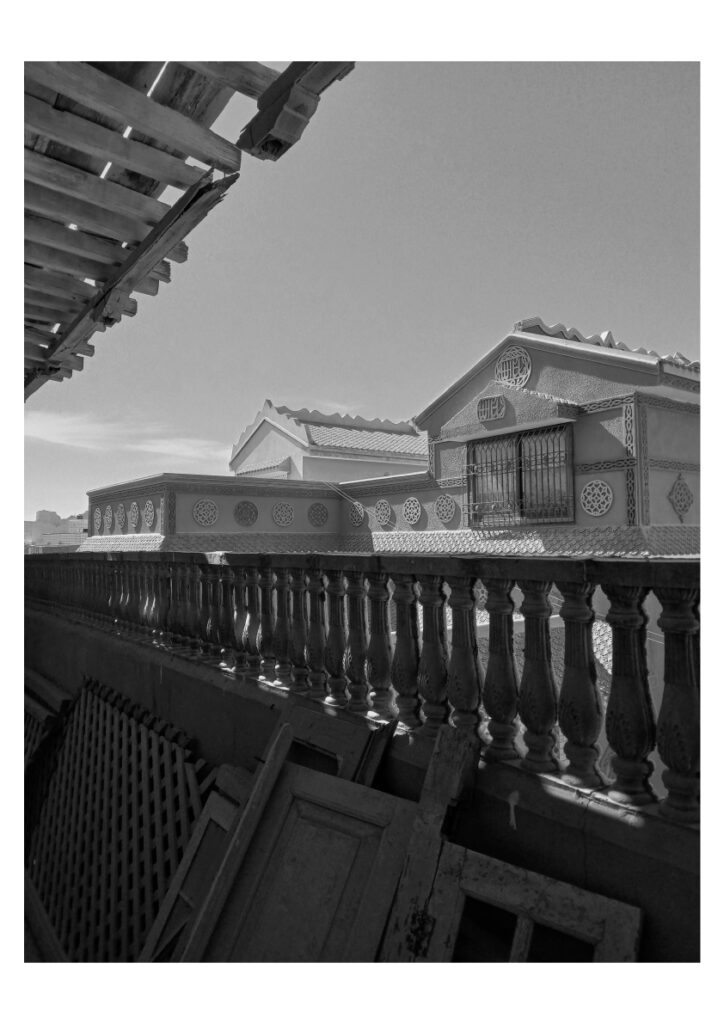

Since the fish trade was in control of the Ismaillia, native started to understand that the Ismailia is profiting well over their hard work. They made complaints to the Wali over the rate of fish offered by the Ismaillia and the high rates of commodities mostly sold by Ismaillia.
In 1928-29 there was a feud and riot in the town against Ismailia. Someone threw e human waste over the walls of a mosque. Some one claimed that it was done by Ismaillia. A feud started. A mob attacked the Ismailia at their shops and offices. Half a dozen were injured. One of them got built wounds. It was the first major unrest in the town since decades. Actually it was an expression of anger against the economic and political influence of Ismaillia in Gwadar.
Current Position ;
During the partition in 1947, Gwadar was under the rule of Oman which was started in 1776. After partition Hindus started to migrate to India and Muscat. Their properties and business were taken over mostly by Ismaillia and some native Balochs who used to work for them. During 1950s when there was an unrest among the natives and an underground movement was started for accession to Pakistan, the Ismaillia silently started to move their businesses to Karachi. In 1958 when Gwadar was accessed to Pakistan, the political power was shifted to natives. Some Ismaillia moved to Oman too. But when there was boost in the Gulf countries most of the Hnidus and Ismaillia of Gwadar were first to reach there and start their businesses. In Sharja there is a Gwadari bazaar which was established by Ismaillia and Balochs from Gwadar. The exodus of Ismailia from Gwadar, Pasni and Ormara was continued till last two decades of twentieth century. Presently the number of Ismailia in Gwadar is quite low. Around ten or twelve families are living in the Ismaillia colony. And they keep their businesses and families moving between Karachi and Gwadar.
Isamillia in Gwadar do not take active part in local politics. They do not mingle with native Balochs but tend to live separately. Accept of a few, most families have limited movements and do not attend local social events.
Recently there is an addition of Giligiti Ismailies in Gwadar. The Gilgiti adopted Ismaillias quite recently. They are accommodated and helped by the Isamillias. The Rich Ismaillies who have fish processing factories in Gwadar, have employed many of Gilgiti Ismaillies who now live and work in Gwadar. They are hard working and because of being coming from Gilgit can easily work in the cold storage of the fish factories. They also work on cheaper wages.
Ismaillia and the fisheries;
The Ismaillias are no more the sole player in fisheries sector in Gwadar. There are many more Baloch, Punjabi and Bengali middle men and transporters in the business. But the Isamillias still control the export of Gwadar fish to other countries. They now work in partnership with Balochs from Gwadar.

Agha Khan School Gwadar
There were school according to my father his grandfather went to School in 1899 But apparently is not registered school on that times the Ismailis have a very good interest in business and the school is was a basic support to the people who work in trades later who knows the basic things. reading, writing, calculating, Ismailis aims that the people should not be the illiterate, my father said that on that time I have passed two classes but now that two times are equal to metric the matric School iss liey thi k Ismailiyu ko karobar ka bada shaok tha likna padna kali jahney hisab kythab jantha ho jahil nai ho hy basic cheezy jhan sakey mera bap bolo main ney doh kythab pada hai aur jhan gaya tha phely zamaney ki doh kythab tho bahut badee bath thi, Meri Ammi ney middle 8th class isee school main kia tha 1936 main, uss waqth iss school ka nam HRH tha.
School ko dushman huhy hamarey Karachi waley! k serif yahan Baloch padthy hain aapky Ismaili bachy nai hain! isky liey main ney ladai kia tho mery apney E Ismailiyu ney kaha (baly baly) Mansoor ko Nikal doh. 1974 main school middle thi school ko satiya nas karney wala bhutto jis ney tamam Pakistan k schools ko nationalize kia, later the Ismailis thought that govt could be taking over their Jamat Khana because the school was situated in the same building the jamat khana is so (ratha k rath nikal kar) on the nights they shifted the school out of Jamat Khana, into the hostels of teacher “that place owned by (Kauda Ahmad Khan). jithney bi hamarey baher k teacher hathy thy ow yahee par stay karthy Punjab, KPK, Sindh, ow yahee par stay kar rahy, uss waqth theen/3 teacher stay kar rahy thy unko Ismaili Colony k andar ek ghar kali tha wahan usko beta deya aur school ko wahi par shift kia, aur govt ney kia kiya school ko middle sey primery kardia, school ka mahool jo hai shalwar korthy pahena deya jo govt ka dress hai same waisa E dress huha it is the year of 1974.

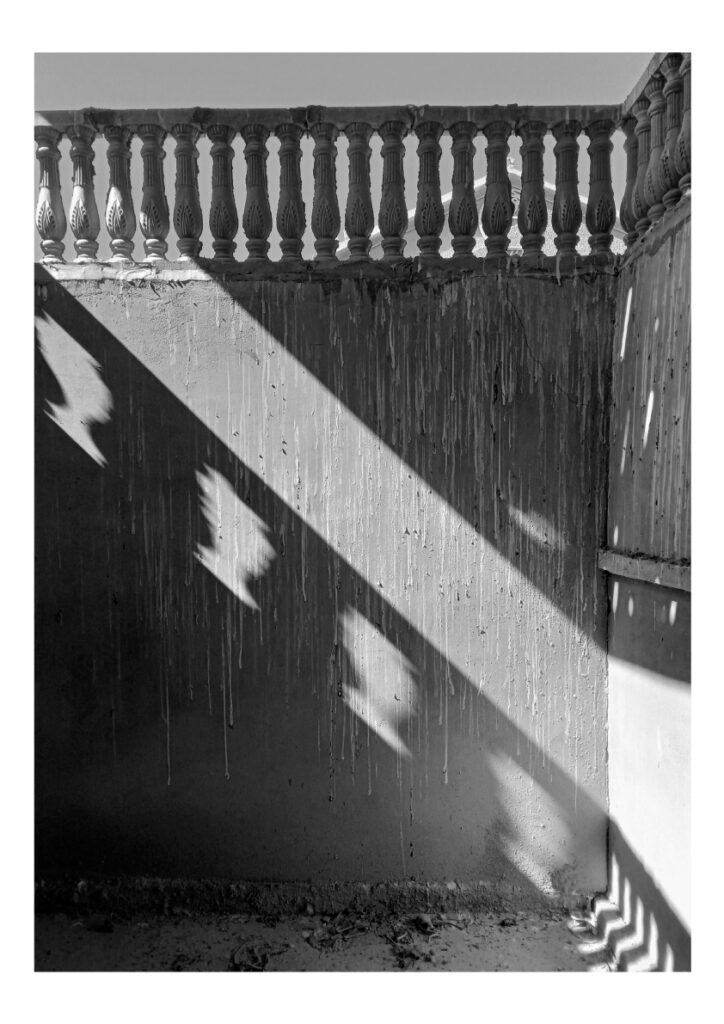
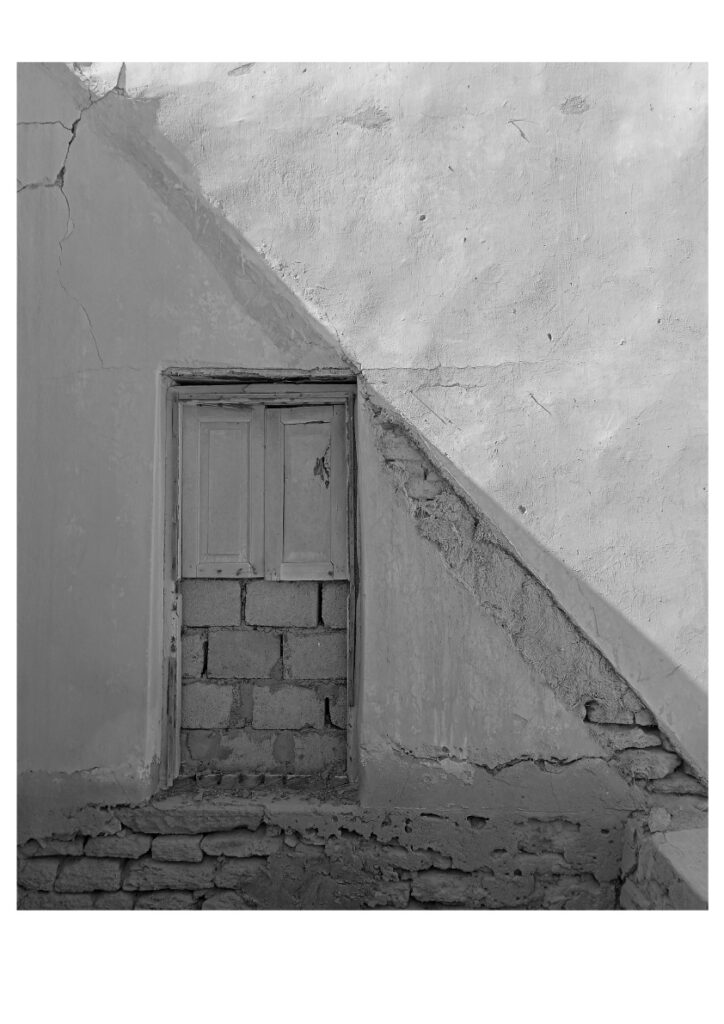
House things and their background
These windows and doors of were came from different countries and their cities, Malibar (Kerala) Calikot (Kolkata) Ceyloon ( Sri Lanka).
Window: There were so many windows in a single room for the enterence of air in the room and for the light. But in the passage of time we have closed most of the windows forever due to the dust because not everyone wants to clean up the house everyday and also these houses. And after completing Air Condition on the place of window, we set up most of wood window area into glass. The fortune of this wood window was that it will last more year then it,s usual.
(Tankbaree/Tankabaree) is a cupboard attached to the wall of the house. And made of wood which is through covered inside the wall used for the clothes of the children, comb, mirror, daily life usage.
(Patee/ Patty) Similliar to the shelf of todays but it,s very large from the one side to other of house it completed on the top indoor side of the house which carries plates, cups, (Kasheeg, Cop oh saan, Piyala, Borza seni, dema kasheeg, cop oh pat, (pat sosar) jala cope tangetaga, doh darzen tangetaga, latheehy pat hy sra zard, neel, sheenz, sur, feroza, amey droshumey seni tangetaga biza mahey logey zeenat amisha pesara hy cheez nabitaghan arkasa har chez geftag humda hair kotagey, pesara cupboard, singhar maiz, oh hywaden cheez nabitag) on that days it was used for things.
Door: This was an old and real door I have changed it three decades ago this when it was broken. ( I don’t know master saying that they were very foolish and fooled Dekho phily kasiy beyhakal log thy phely, Mujhy abhi tak samajh mian nai harah hai k master iss main kis ko dushwaree/ (point out kar raha hai) teyrah raha hai) There were no worry about the and tension about the thief. ( Why master was Laughing on that Door?)
There was a stair of woods which connected the ground floor to the first the only way to the first floor. (many years ago my child Alisha slip in these stairs so I immediately called a labour and cemented them. These stairs were very week there weren’t any shelter for them the mist, rain, winds, were made them very weak.
Current situation conplict on the place of mandir: The current head of Hindu Community has said that they need two two Singhar flat into the exchange of there ancient mandir place inside Ismailia Community the Ismailia Community people said that there place infront of there mandir in on the other side of street situated infront the mandir north-east portion of the community.
An Old Door Inside a Community Where Two Carved Spots Used to be for Light Lamps in General and Special Occasions.
There talk is ongoing on this issue. (when we were talking about mandir and the place master Mansoor Ali Sayani said that I remembered the sentence of Master Abid Rahim Sohrabi (Former Chairmain of Municiple Committee Gwadar)who stand here and said that if they come back for land of mandir so the people of Ismaili Community should have to allow them but there Mandir gate and sorrounding boundary shall be the part of Ismaili Community boundary they should have know it. this all area is not mandir place only from the right side to the north of this place and come to the point just a portion for two rooms.


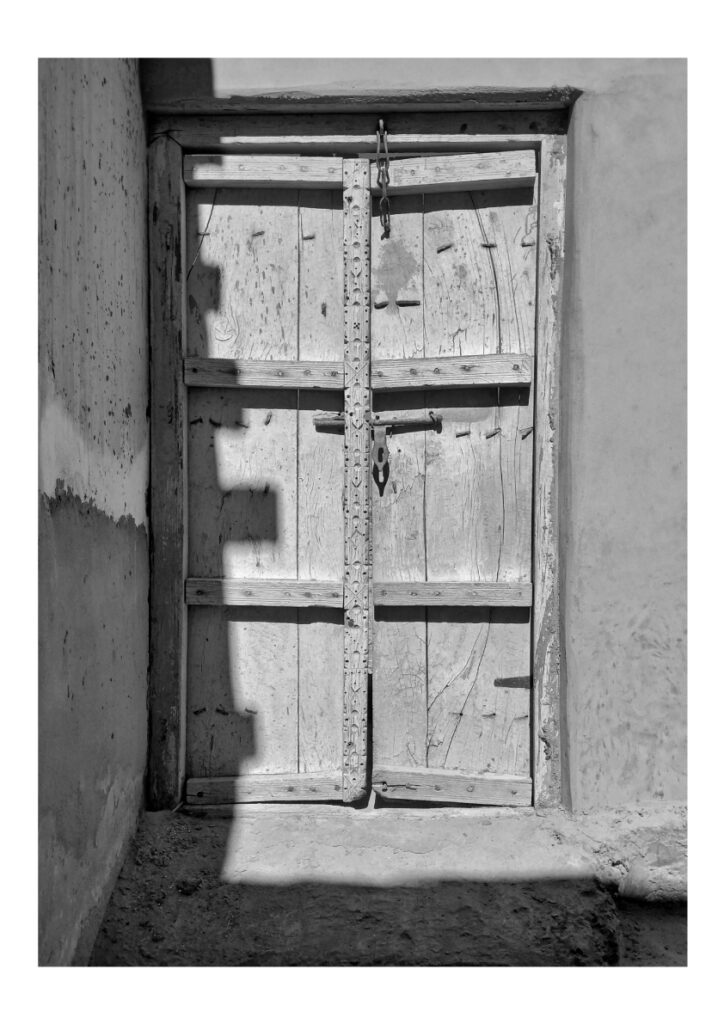
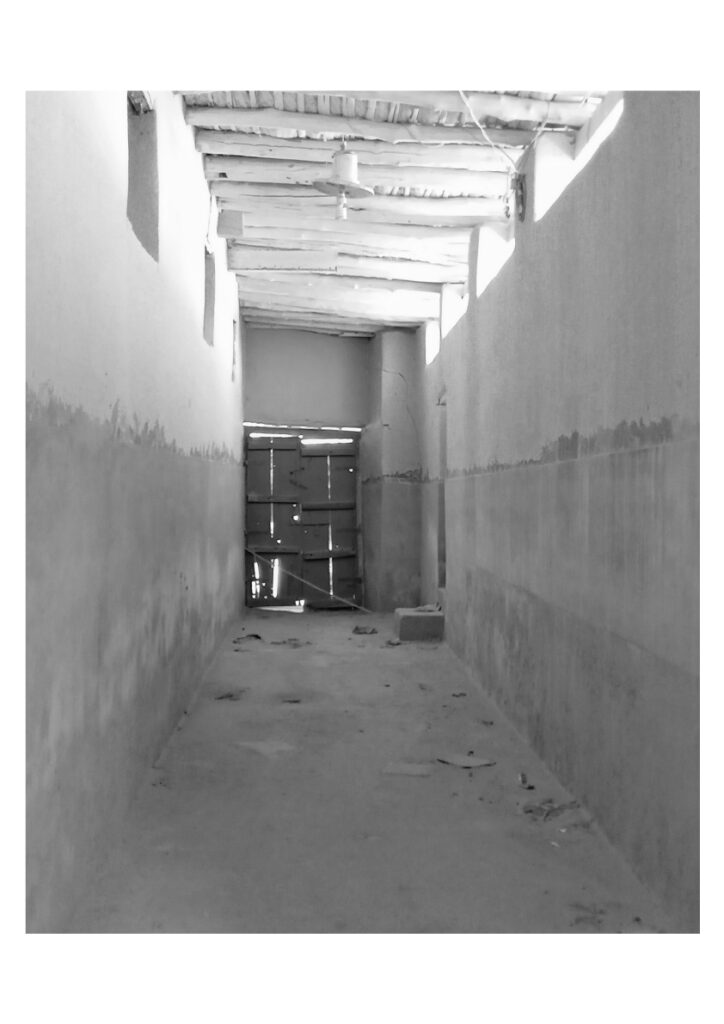
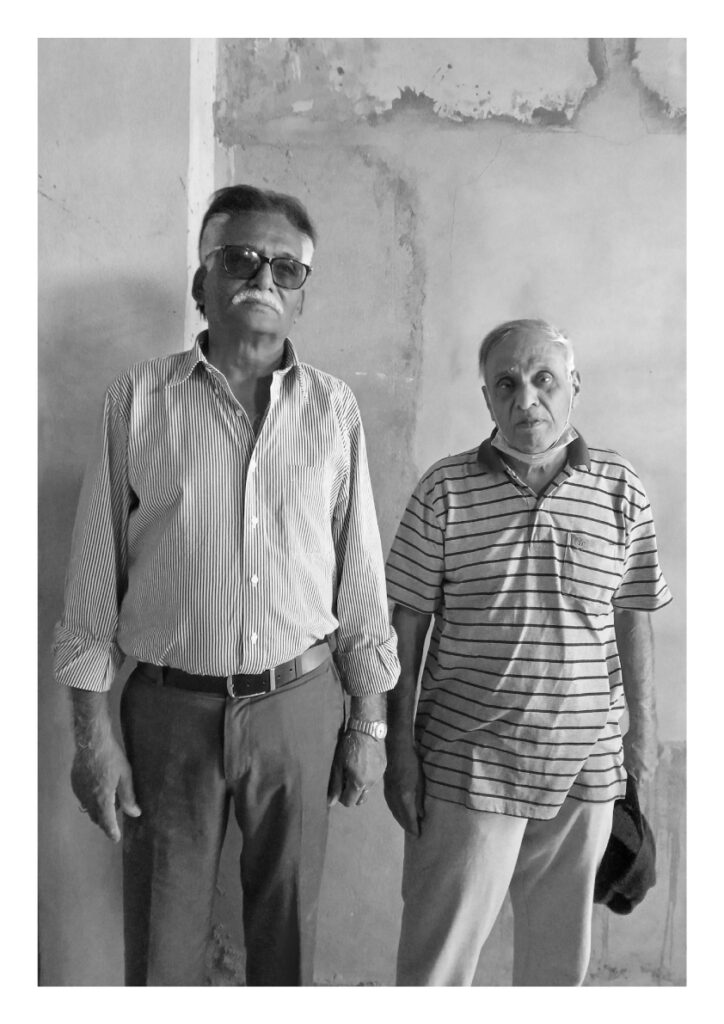
Aga Khan School Gwadar and, Master Mansoor Ali Sayani.
Mr Mansoor Ali Sayani, he started the conversation he added my father said that and our history said that there were four families Dr Bana Kay Bap ka bap they came from Chahbahar, They were the Ismaili living in Chahbahar Iran.
And also mine Gola, Gola’s father Saya they were also from Chahbahar, they were businessmen.
Abhi in chizu ko 100 ya 150 sal hoga, our house were there near Koh Bathil just Ismaili and mehd living there.
Father said that our that got fire out there still don’t know what was the reason was it suddenly or was it deliberately did there. 150Jamat Khana was there near Koh Bathil latter on Graveyard came into being there there fishermen families living in huts out there then later they made this empty area Graveyard, there weren’t any graveyard right there.
One family came from Kach India.
Two family came from interior Sindh, my grandfather (Mery Mah Ka Bap) belong to Sakara Sindh, I havn’t see it yet only heard the place name I have seen Sukhar but not Sakarah from there they migrated to Gwadar these four five families were living here on the year of 1757/1760 my father said that from that time these families are here.
Father said that on the end of 18th century that place got fire most huts got fire but not Jamat Khana later on Ismaili’s and Hindu’s ko Sultan ney apney fort k andar jaga di rehney k liey, later on Ismailis started to build there Jamat Khana inside there only the ground floor on 1857, 3rd (Theen maley tak mukamil kardia) floor completed on the year of 1905 this was completion of Jamat Khan.
School existed according to my father he said that his grandfather said that on the year of 1899 they went to school, school were existing but not public and not registered, You understand you know well that Ismailis were very interested doing business and they wanted to build people to learn, read, and would be good in the calculating and maintaing the balance sheet, the person should know the calculations, knowledge to learn and read. The Ismailis wanted that person won’t be an illierate person working out there know the basic things of Education, my father said I have read two classes and you know that (phely zamaney k doh classes tho bahut badee bath hai) my mother completed her middle in this school 1936 main phir bahd main 1943 main uski shadi hogai. On that times Ismailis started the world famous trading business of fish Saloon (Sri Lanka) in old days it name was Saloon, India Bombay, Kalikot, Malibar, these all type of business run by Ismailis, (Ismailiyu ka ye chkr huha k dekho k aap logu ko bath bahuth bahd main samajh main hahee phely samajh nai hahee).
Ismailiyu ka ye chkr tha k ow apney bachu ko tahleem k liey baher lyky gahy migration education ki wja sey huha, lykin aaj bi unky bachu ko ow jagahen pasund baly E ow sra zindagi wahan par rahy hain abhi tak un logu ka ghar hai Gwadar lykin chodthy nai hain, abhi bi inka ghar hain logu k jahney ka ek phelo ye bi hai k middle k bahd yahan par high quality tahleem moyaser nai tha Dr hu ka ithna bada issue nai tha lykin middle karney k bahd migrate karthy thy aur padahee process karney k liey Karachi jathy thy, ek Dr thi Zarina ow padahee mukamil karney bahd yaha hahee uss kuch harsey 5 sal kidmat kia phir baher chaly gahy, lykin main issue tha education migration k hawaly. 1970 main Ismailiyu ki strength 600 ya 800 huha kartha tha baher k rooms aur andar k rooms sub (kacha kach) bara huha tha, iss mohaly k charu taraf Ismaili abad thy,
School name was HRH, you and all know that I have done well enough for school, school was situated in a poor place shifted to an other rent place started up the co-education, (school ko dushman huhy hamarey Karachi waley k serif yahan Baloch padthy hain aapki Ismaili bachy nai hain, iss k liey ladai kia main ney tho hamarey E community k logu kaha (bily bily) chodo chodo Mansoor phir 6mahiney bahd school band hogaya that ).
School ka ye huha k school 1970 tak sahi thi aur yahee thi school in this place near to the Jamat Khana, from different cities teacher were serving there and ( yahan k jithney bi Mir, Kauda, Tehsildar, Nazum, jithney bi mothbae shaks thy inky bachy isee school main padthy thy, Dr Dost thy yahan sey pada hai jo abhi Turbat main hai, Education ki wja sey sub migration huha hai aap gahey main aap ko dekh kar chala hagaya, ye gahya tho main apney bachu ko kiyu nai lykar jahu, wahan apni zindagi start ki.
The fort guns were still there so I have renovated black colour to them later bring them infront of the school assembly and the guns became very popular everyone had news about them so when I left the school so the govt official come back and took the guns from here to their office area but when I was there I have not let them to took them away to their offices because I have renovated them and the guns were the part of our School Assembly I haved learnt my basics reading from Qauid-Azam primery School Karachi and from the childhood I have had that feeling of scouts parade in the school on those time I was the only one among class to be part of the scouts so that’s the reason that I haven’t let them to take the guns away in the govt officials area I have felt my childhood memories everyday when I saw these guns were there and the situation of (“Left Right” Attention” Stand Easy” Close you are hands” Open your hands”) these were the things that I have really felt very energetic and emotional.The guns not were for the exhibition they were the parts of our school.
Master Mansor Ali Hierarchy
Sayani his father Gola, His Allana, Shams-Ud-Din then me Mansoor Ali, then Ali Shah, Mustansir.
An open Conversation Between Noor Ali Pesnani and Master Mansoor Ali
Talking about empty houses and people whose ancestors lived there once a time. Wali-E- gate is a main entrance gate of the community complex and there were four entrance gates of this compound. We are relatives because of intermarriages and share many mutual relations with one another.
The Tale of Old Shahi Bazar and its People
Shahi Bazar was a bustling and crowded area with people where people used to come to hotels for drinking tea and purchasing other things. In Shahi Bazar, there used to be a hotel named [Murad Bux Hotel] in the past time. Many of the Ismaili Community people used to come to this hotel and Bazar when leaving from Jamaat Khana. They mostly drank tea and only a few of them barely ate Pan. There were several other shops ahead as one moved on into the Bazar in previous times.
The current shop of Taj Muhammad used to be a date selling shop of his father. There was also a date-selling shop a little bit ahead. The Ismaili Community boundary had several doorways from eastern to western sides as per Mama Ibrahim Pan Wala. The currently collapsed buildings separated from the community boundaries were also the abodes of Community people. Gwadar used to be a peaceful and pleasant city in back times when there were no outsiders and strangers.
Street of Old Shahi Bazar in Rainy Days.
The road of Shahi Bazar used to be an elevated and high ground level in previous times due to cement and construction work two or three times but as time passed by the road eroded and there was not any construction work till the present day which is why the flow of rainwater surges into my shop which never happened to occur in past days when a road was in a quite good condition.
When water gets into my shop, I, unfortunately, become compelled to close my shop and take the water out of my shop with constant and continuous struggle and efforts.



